Here are six must-read books for November
Joe Hagan recounts Jann Wenner’s salacious life, Mike Spencer Brown offers a chronicle of ‘crazy’ travel and Ta-Nehisi Coates examines Black American tragedy
Share
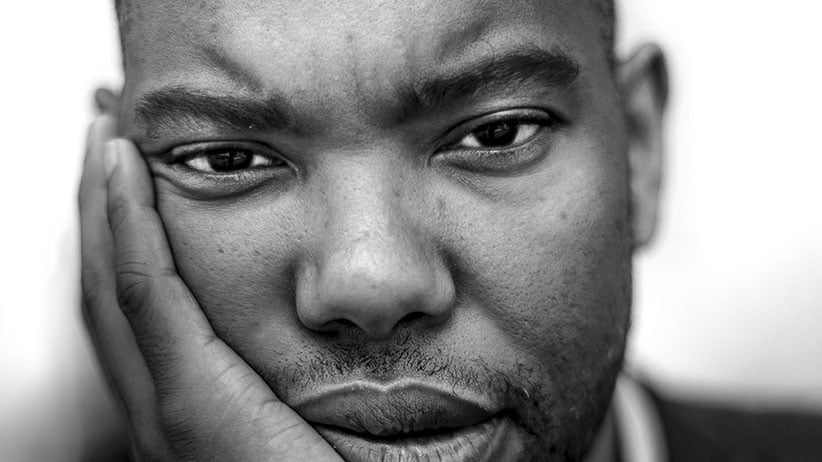
This month in books: Ta-Nehisi Coates unpacks America’s moment of hope in his new collection of essays, Mike Spencer Brown chronicles a multi-decade odyssey around the world and Jorge Carrión delves into the history of bookshops as cultural icons. Read more below and check out the rest of our book reviews.
WE WERE EIGHT YEARS IN POWER
Ta-Nehisi Coates
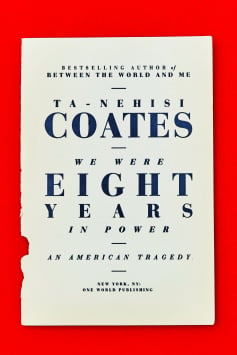 By May of 2008, Barack Obama’s run for the Democratic presidential nomination, once believed to be far-fetched, was snowballing into historical inevitability. At the same time, The Atlantic published “This Is How We Lost To the White Man,” an audacious essay on the conservatism of Bill Cosby, then known as a patron within the Black community and as “America’s Dad” throughout the country. The essay laid bare Cosby’s disingenuousness in laying blame for the community’s struggles at the feet of a lost generation, while deconstructing the white supremacist myth of black pathology. That essay was penned by Coates, then a freelance writer who reached for the rhetorical heights of James Baldwin while mired in poverty and personal failure off the page.
By May of 2008, Barack Obama’s run for the Democratic presidential nomination, once believed to be far-fetched, was snowballing into historical inevitability. At the same time, The Atlantic published “This Is How We Lost To the White Man,” an audacious essay on the conservatism of Bill Cosby, then known as a patron within the Black community and as “America’s Dad” throughout the country. The essay laid bare Cosby’s disingenuousness in laying blame for the community’s struggles at the feet of a lost generation, while deconstructing the white supremacist myth of black pathology. That essay was penned by Coates, then a freelance writer who reached for the rhetorical heights of James Baldwin while mired in poverty and personal failure off the page.
Nearly a decade later, Coates stands as the standard-bearer of skeptical black intellectualism. His 2015 book, the National Book Award-winning Between the World and Me, disarticulated the American mythos of equality. In his new book, Coates shifts from lecturer to griot, chronicling the eight-year decline of America’s moment of hope through his essays written for The Atlantic.
We Were Eight Years in Power is named for an excerpt of a speech made by Reconstruction-era congressman and civil rights advocate Thomas Miller, as a political resurgence of secessionists primed the country for the Jim Crow Era. Coates’ selected essays cover ground from Barack Obama’s conservative liberalism to the prison industry’s role in returning blacks to bondage, neatly tracing a parallel in which white America’s primordial fear of submission to black authority spurs its descent into Trump-era revanchism. Between chapters, Coates reflects on his growth as a writer and a father, from the ignominy of his academic and financial failures to his ascension as the intellectual successor to James Baldwin.
We Were Eight Years in Power is a brilliant reflection, and perhaps a hefty primer for the uninitiated. But there is something dated about it, even within the recently written chapter interludes. Coates sifts through the pantheon of Black thinkers, and the ideologies of generations past, yet there’s hardly a thought spared on the modern revolutionaries of the Black Lives Matter era. America’s moment of hope may have passed, but something far more potent has risen in its place; that remains the unwritten epilogue to Coates’ American tragedy.
—Andray Domise
STICKY FINGERS
Joe Hagan
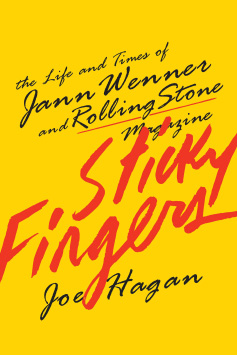 The timing of this book about Jann Wenner and Rolling Stone could not be better. Exactly 50 years after Wenner began branding the ’60s legacy of sex, drugs and rock ’n’ roll as his own media empire, he has put his magazine up for sale. Now his reputation is up for sale in an extravagantly critical, deeply salacious biography that offers up a gold mine of gossip. Author Joe Hagan, a former Rolling Stone intern, portrays Wenner over the years as an omnivorous glutton, a bisexual harasser, a cokehead, an alcoholic, a spendthrift and a cheapskate, and a corrupt shill for celebrities, who would betray his idols and could give Donald Trump lessons in narcissism. What’s astounding is that the subject hand-picked the author, giving him countless hours of interviews and some 500 boxes of his personal archive. Hagan says he negotiated editorial freedom from Wenner, who didn’t even read the manuscript—“he took a gamble on a writer.”
The timing of this book about Jann Wenner and Rolling Stone could not be better. Exactly 50 years after Wenner began branding the ’60s legacy of sex, drugs and rock ’n’ roll as his own media empire, he has put his magazine up for sale. Now his reputation is up for sale in an extravagantly critical, deeply salacious biography that offers up a gold mine of gossip. Author Joe Hagan, a former Rolling Stone intern, portrays Wenner over the years as an omnivorous glutton, a bisexual harasser, a cokehead, an alcoholic, a spendthrift and a cheapskate, and a corrupt shill for celebrities, who would betray his idols and could give Donald Trump lessons in narcissism. What’s astounding is that the subject hand-picked the author, giving him countless hours of interviews and some 500 boxes of his personal archive. Hagan says he negotiated editorial freedom from Wenner, who didn’t even read the manuscript—“he took a gamble on a writer.”
Sticky Fingers frames Wenner’s epic saga around his fawning relationships with two rock legends, Mick Jagger and John Lennon. Jagger was furious at Wenner for “crucifying” the Stones for the murder and mayhem at their 1970 Altamont concert, and never stopped threatening to sue him for stealing the name of his band for his magazine—though Mick graced its cover 31 times, more than anyone else. Wenner also adored John Lennon, but he betrayed the former Beatle by turning a 1971 RS interview into a book, against Lennon’s wishes. They never spoke again. A decade later came bittersweet redemption, as Rolling Stone marked Lennon’s death with a landmark issue, and the cover photo of a nude John wrapped around Yoko Ono that Annie Leibowitz had taken just days before his murder.
Sexual escapades run rampant in the book, ranging from Wenner’s claim that he slept with most of his RS staff to a “weekend of heli-skiing and female prostitutes” in B.C. But ex-wife Jane—who remained devoted to Jann even after he came out of the closet and left her for a young man in 1993—is the most intriguing character. It’s fun to read gonzo tales of writers like Hunter S. Thompson and Tom Wolfe, but they can’t compete with a drug-addicted Annie Leibowitz falling in love with her editor’s wife while having a fling with Jagger. Or the book’s haunting conclusion—that Wenner was the prime architect of the celebrity culture that Trump, another 71-year-old impresario, has taken beyond the pale.
—Brian D. Johnson
THE WORLD’S MOST TRAVELLED MAN
Mike Spencer Bown
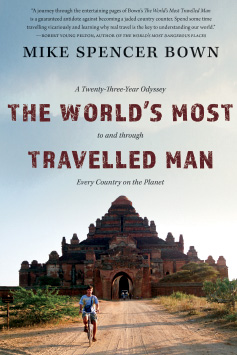 Horse kidneys with raw onions? Sure. Roasted piranha or goat’s eye? Please. Smoked monkey? No, thanks. “A man’s got to know his limitations,” writes nominal Albertan and assured storyteller Mike Bown with a hefty pinch of irony. After all, his 23-year odyssey through every country on the planet can hardly be labelled the definition of self-imposed limitations. Vowing at an early age to experience “a life without tedium,” Bown faced “crazy, dangerous, and fun stuff” in what he calls a “chaotic, alluring, and tremendously large world.” His exceptional travelogue provides a banquet of highs and lows.
Horse kidneys with raw onions? Sure. Roasted piranha or goat’s eye? Please. Smoked monkey? No, thanks. “A man’s got to know his limitations,” writes nominal Albertan and assured storyteller Mike Bown with a hefty pinch of irony. After all, his 23-year odyssey through every country on the planet can hardly be labelled the definition of self-imposed limitations. Vowing at an early age to experience “a life without tedium,” Bown faced “crazy, dangerous, and fun stuff” in what he calls a “chaotic, alluring, and tremendously large world.” His exceptional travelogue provides a banquet of highs and lows.
This “non-material multimillionaire” (a.k.a., someone rich in experience) has lived out of his backpack for nearly all his adult life—he’s now 48. At the final country on his list, Ireland in 2013, he wonders about his “helter-skelter existence”: was “no car, no house, no suits, and no stuff” worth it? In the same paragraph, he answers: “yes.”
He begins his book as a “dunce” with no practical travel skills; eventually he’s a “freestyle traveller” advocating “going plan-less but not clueless.”
Possessing “an abundance of un-common sense”—not to mention “innate toughness,” a “cast-iron stomach” and “burning curiosity”—Bown makes a convincing case that “no one with the means to see the world in style can ever see the real world.”
Staying in “dreadfully shabby hotels” (or: couch surfing, sleeping in squats, sharing bunks in hostels), he faces a real world that runs from sublime to demoralizing. Bown recounts the exotic and wondrous, including Machu Picchu in May, gawking “at impossibly cute pandas” in the Szechuan hinterlands, sharing “dodgy hooch” with Indonesian farmers, and swilling vodka on a three-month train journey from Saint Petersburg to Vladivostok. Oftentimes, though, he’s exposed to the opposite. A “disgustingly polluted” lake and “fecal minefield” here, a “sprawling slum” and “scuzzy place” there, and many, many desolate habitats of bare subsistence.
Another small miracle is how Bown has compressed over two decades of journal writing into a readable, enjoyable, eye-opening and fully captivating travelogue. Plus, for readers who’d rather cut off their own feet before hitchhiking along war-torn highways, opt for sheep’s brain as a meal or view “years of gruelling travel, lethal disease, and exhaustion” as enticing, his book is an ideal opportunity to learn while enjoying the familiar comforts of home.
—Brett Josef Grubisic
HEATHER, THE TOTALITY
Matthew Weiner
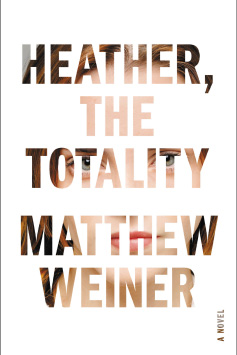 Mark and Karen Breakstone are middle-class New Yorkers who married later than usual, in their early 40s, just before they got rich. That has something to do with Mark’s job, which is in finance—there is considerable understated social and psychological observation here, but Weiner, a Sopranos writer and the creative force behind Mad Men, doesn’t waste a word on anything not crucial to events in his taut novel. Soon the Breakstones have a single child, Heather, a beautiful and empathic girl who becomes the sun, moon and stars—the totality—of their lives, the only real reason they are still together and the main force threatening to split them apart.
Mark and Karen Breakstone are middle-class New Yorkers who married later than usual, in their early 40s, just before they got rich. That has something to do with Mark’s job, which is in finance—there is considerable understated social and psychological observation here, but Weiner, a Sopranos writer and the creative force behind Mad Men, doesn’t waste a word on anything not crucial to events in his taut novel. Soon the Breakstones have a single child, Heather, a beautiful and empathic girl who becomes the sun, moon and stars—the totality—of their lives, the only real reason they are still together and the main force threatening to split them apart.
Ten years before Heather’s birth, a heroin addict gave birth to Bobby, the very definition of an anti-empath, whose first real emotional arousal came when he saw a bird trapped in an air conditioner, turned it on and watched “in awe until blood sprayed out the vent.” Part of the reno crew working on the Breakstones’ condo building, Bobby fixates at first sight on teenaged Heather like a Komodo dragon on a blissfully unaware tourist. The hollow parents, the perfect child and the predator are on a collision course that is predictable in outline but one page-turning surprise after another in detail.
Squint hard enough, and there are a handful of mordantly funny moments in Weiner’s fiction debut, like when Bobby, a newcomer to Manhattan, “watched so many people pass without eye contact that it recalled his first weeks in prison.” But humour, like the details of Mark’s job, is superfluous to the tone and relentless pace of a story that would be hard to put down even at twice the length. Weiner relates seemingly random facts and events in such a low-key fashion—including the startling conclusion—that the subtle way he eventually ties them together almost slips by. Six pages in, it doesn’t seem important that Mark’s father was a high school football coach; six pages from the end, it does.
Heather packs a lot into its compelling story, from contemporary class tensions in America to obsession in its manifold forms, and pitilessly dissects it all. Noir is hardly dark enough a word to describe it.
—Brian Bethune
BOOKSHOPS: A CULTURAL HISTORY
Jorge Carrión
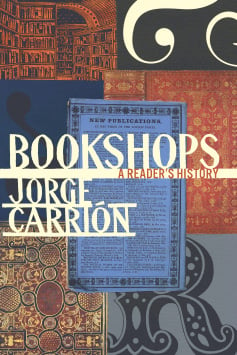 Readers in general love bookshops, but as this meandering and sublimely entrancing essay demonstrates, it’s doubtful anyone’s devotion has ever exceeded Carrión’s. He’s travelled through six continents to visit them—and like few other first-time arrivals in Australia, he makes a Sydney bookstore his initial stop. He knows the shops’ individual histories and associated authors, which one evokes a Stefan Zweig story or a Gabriel Garcia Márquez novel. He realizes they all bring to mind Jorge Luis Borges, the poet of text, who once declared “the chief event in my life [was] my father’s library.”
Readers in general love bookshops, but as this meandering and sublimely entrancing essay demonstrates, it’s doubtful anyone’s devotion has ever exceeded Carrión’s. He’s travelled through six continents to visit them—and like few other first-time arrivals in Australia, he makes a Sydney bookstore his initial stop. He knows the shops’ individual histories and associated authors, which one evokes a Stefan Zweig story or a Gabriel Garcia Márquez novel. He realizes they all bring to mind Jorge Luis Borges, the poet of text, who once declared “the chief event in my life [was] my father’s library.”
Carrión is brilliant on the variable role of the bookshop as a cultural icon. The North American store is the most anodyne, carrying a primarily commercial aura. The British experience is, well, uniquely British, drenched in Dickensian nostalgia. Carrión likes to tell stories about William Foyle, the emblematic English bookseller: his offer to buy, naturally at a bargain rate, all those books the Nazis were inexplicably burning (they turned him down), or covering the rooftop of his London store with copies of Mein Kampf during the Blitz in hopes of protecting his four million volumes. But in Southern Europe and Latin America—the book worlds with which Carrión, a Barcelona professor and author, is most intimate—the idea of the bookshop is inextricable from the notion of resistance to repressive governments.
Despite the differences, there is a commonality everywhere to book lovers’ relationships with bookshops, Carrión argues, even in the Beijing store where he found books banned by the Communist government. Libraries, almost always public institutions, inspire awe and respect, but bookshops—private and commercial, frequently failing and often on the move—somehow create a more intimate bond. For centuries, they’ve been a place of connection between writers and readers, a realm the brave new world of digital text and drone delivery has yet to replace, and their contemporary dwindling adds a gloss of elegy to Carrión’s paean.
Yet his Borgesian book—it can be opened at any point and read forward, or backwards for that matter—is not at all sad. To read is to travel in time and space, and to travel from bookshop to bookshop is an ecstatic experience for Carrión, a joy he conveys page after page.
—Brian Bethune
A HISTORY OF CANADA IN TEN MAPS
Adam Shoalts
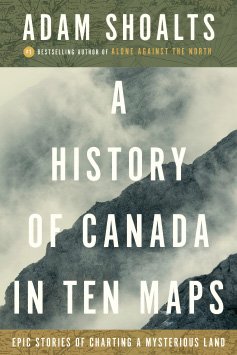 This author’s 2015 book, Alone Against the North: An Expedition into the Unknown, tracks his quest to find and map the Again River, a remote waterway in the Hudson Bay Lowlands. Its first line is, “I think I always knew I was destined to become an explorer,” and from there Shoalts goes on to provide a brief history of exploration. He clearly venerates explorers of old, the men who forged expeditions to uncharted lands. Shoalts’ new book, subtitled Epic Stories of Charting a Mysterious Land, grapples with Canada’s origin story, though as Shoalts says in the introduction, “this book is not about celebrating the past 150 years. It is about taking a look at what led up to 1867 through the maps that have come down to us and the stories they tell.”
This author’s 2015 book, Alone Against the North: An Expedition into the Unknown, tracks his quest to find and map the Again River, a remote waterway in the Hudson Bay Lowlands. Its first line is, “I think I always knew I was destined to become an explorer,” and from there Shoalts goes on to provide a brief history of exploration. He clearly venerates explorers of old, the men who forged expeditions to uncharted lands. Shoalts’ new book, subtitled Epic Stories of Charting a Mysterious Land, grapples with Canada’s origin story, though as Shoalts says in the introduction, “this book is not about celebrating the past 150 years. It is about taking a look at what led up to 1867 through the maps that have come down to us and the stories they tell.”
It starts with the Vikings’ Skálholt map (drawn by “an Icelandic scholar” in 1590), which tells the story of the Norse voyages to North America 500 years before Columbus. The book then moves to the map of New France drawn by Samuel de Champlain in the early 1600s. Unlike previous colonizers, writes Shoalts, Champlain actually sought “to make friends with aboriginal nations rather than antagonize them.” From there, the author proceeds to the maps of Scot Alexander Mackenzie, who made two journeys west toward the Pacific Ocean in the late 1700s and filled in many previously unknown details about “what had once been a vast blank space.” Shoalts outlines a history that encompasses bloodshed, the harshness of the northern wilderness and climate, and interactions with indigenous peoples.
The author does a fine job of recounting how Canada’s borders were drawn, though this is a narrative in which the history of colonization is somewhat usurped by the attention the author gives to the act of exploration itself, which in Shoalts’ vision seems more important to how the country came to be. Still, his expositions do not ignore the violence that created Canada—its “history was nothing if not bloody,” he writes. It becomes clear throughout the book, and especially in the author’s discussion of American Peter Pond’s map of Canada’s northwest, that the borders drawn by a map aren’t necessarily complete. In fact, the best a map can do is outline a moment in time.
—Dilia Narduzzi
MORE BOOK REVIEWS:
- Five must-read books for October
- The five books everyone is talking about in September
- A question for author Claire Cameron: Are you a political writer?
- The poetry and wisdom of Joni Mitchell and Gordon Lightfoot
- Rogers Writers’ Trust: Spotlight on Carleigh Baker
- Rogers Writers’ Trust: Spotlight on Omar El Akkad